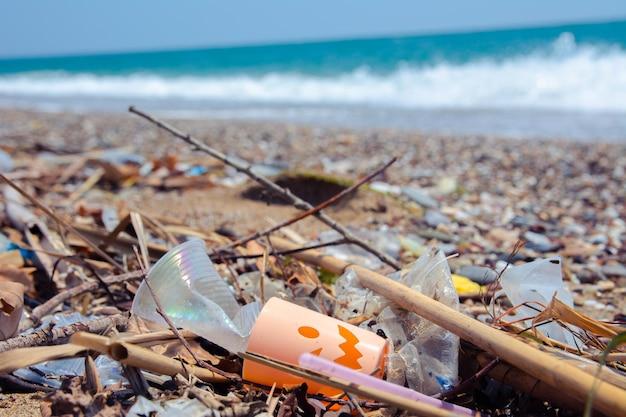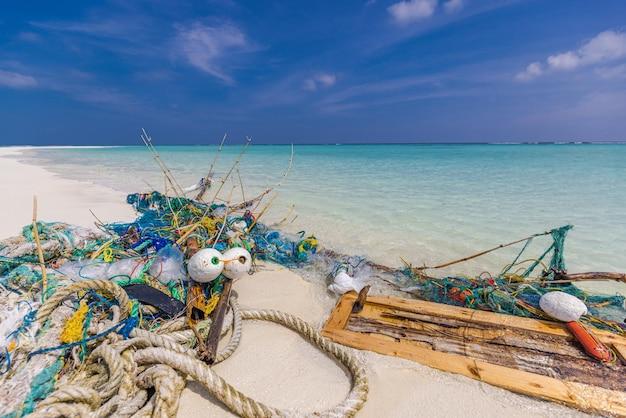In the year 2023, as we navigate the complex web of environmental issues, one subject remains at the forefront of our discussions: plastic. Its presence is undeniable, as it has become an integral part of our daily lives. From the packaging that wraps our food to the devices we can’t live without, plastic is everywhere. But have you ever wondered if plastic is truly a man-made creation, or if it has existed in nature since time immemorial?
In this blog post, we will delve into the fascinating world of plastic and explore its origins. We’ll answer burning questions like: Who invented plastic? Is plastic a waste? How are plastics created? And why did we start using plastic in the first place? So, join us as we unravel the mysteries and complexities surrounding plastic, and gain a deeper understanding of its impact on our planet.
Stay tuned as we uncover the truth about plastic, its origins, and its implications in our rapidly evolving world. Let’s dive in, shall we?
Is Plastic Man Made
Plastic, oh plastic! It’s everywhere you look. From your toothbrush to your TV remote, plastic has become an integral part of our modern lives. But have you ever wondered where it comes from? Is plastic a naturally occurring substance like wood or cotton? Well, my curious reader, allow me to shed some light on this ubiquitous material.
The Origins of Plastic
Contrary to popular belief, plastic is not a gift from the plastic fairy. It is, in fact, a man-made marvel that arose from the brilliant minds of scientists. In the early 20th century, a breakthrough occurred when Leo Hendrik Baekeland invented Bakelite, the first fully synthetic plastic. This paved the way for further discoveries and the eventual boom of the plastic industry.
Unveiling the Plastic Production Process
So, how do we turn non-plasticic materials into plastic? The process involves polymerization, where small molecules called monomers join together to form long chains called polymers. These polymers are what give plastic its unique properties — flexibility, durability, and resistance. It’s like a chemical Lego set, where the building blocks come together to create a sturdy and versatile material.
A Not-So-Natural Resource
Unfortunately, plastic is not an inexhaustible gift from Mother Nature. It is primarily derived from fossil fuels, such as petroleum and natural gas. Yes, that means every time you buy a plastic water bottle, you’re essentially holding a small piece of prehistoric decomposed plants and animals. Who knew that dinosaurs had a secret talent for transforming into packaging materials?
Plastic: The Chameleon of Materials
One of the fascinating aspects of plastic is its ability to take on a wide variety of forms and functions. It can be molded into any shape or size, allowing manufacturers to create products with intricate designs and complex structures. From the humble plastic bag to space-worthy astronaut helmets, plastic has proven its adaptability and versatility.
The Environmental Conundrum
Plastic may be a staple of our modern lives, but it comes at a cost. The convenience and durability of plastic have led to its overuse and improper disposal, causing a significant environmental problem. Plastic waste litters our oceans, pollutes our soil, and endangers wildlife. It’s a problem that requires collective action and innovative solutions to minimize the impact on our planet.
The Future of Plastic
Fear not, my eco-conscious friend, for there is hope on the horizon. Scientists and activists are working tirelessly to develop sustainable alternatives to traditional plastic. Biodegradable plastics, made from renewable resources, are gaining traction as greener options. Additionally, recycling efforts and public awareness campaigns are crucial in reducing plastic waste.
Plastic: A Man-Made Masterpiece
In conclusion, plastic may not be a naturally occurring substance, but it has undoubtedly changed the world we live in. Its invention revolutionized countless industries, bringing convenience and innovation to our fingertips. However, it is our responsibility to ensure that plastic’s environmental impact is minimized through conscious consumption and proper disposal. So, next time you encounter plastic, remember its origins and think twice before tossing it aside. Let’s strive for a world where plastic is a marvel, not a menace.
FAQ: Is Plastic Man Made
Is it possible to live without plastic
Living without plastic entirely can be quite challenging in today’s modern world. Plastic has become deeply ingrained in our daily lives, from the packaging of our food to the electronic devices we use. However, it is still possible to reduce our plastic consumption and opt for more sustainable alternatives whenever we can.
What country invented plastic
Plastic, as we know it today, was invented in the United States. In 1907, Leo Hendrik Baekeland, a Belgian-born American chemist, developed the first fully synthetic plastic called Bakelite. This groundbreaking invention marked the beginning of the plastic era.
Is the first man made plastic
Yes, the first fully synthetic plastic, Bakelite, was indeed man-made. It was created by Leo Hendrik Baekeland in 1907. Prior to this, there were natural plastics such as shellac and rubber, but Bakelite was the first entirely synthetic plastic material.
Is plastic a waste
Plastic itself is not inherently waste, but its disposal and overuse have created a significant waste problem. The durability and non-biodegradability of plastic cause it to accumulate in landfills and oceans, posing a threat to the environment and wildlife.
Why is plastic harmful
Plastic can be harmful for several reasons. One major concern is its impact on marine life. Marine creatures often mistake plastic for food and can suffer from ingestion or entanglement, which can be fatal. Additionally, plastic pollution affects terrestrial ecosystems, releases toxic chemicals, and contributes to climate change during production and disposal.
Is Plastic Dangerous
While plastic itself is not inherently dangerous, improper disposal and irresponsible usage can have severe consequences. Plastic waste can contaminate water sources, harm wildlife, and contribute to the overall deterioration of the environment. It is essential to manage and reduce plastic waste to mitigate its potential dangers.
What items are made out of plastic
Plastic is used in a vast array of items in our everyday lives. Common examples include water bottles, food packaging, toys, electrical appliances, car parts, and even clothing. Its versatility and durability make plastic a popular choice for a wide range of products.
How was plastic accidentally invented
Plastic was not actually invented accidentally, but rather through experimentation and innovation. Leo Hendrik Baekeland, while searching for an insulating material for electrical wiring, successfully synthesized Bakelite, the first fully synthetic plastic. This breakthrough was a deliberate creation that revolutionized the materials industry.
How are plastics created
Plastics are manufactured through a process called polymerization. This involves chemically bonding small molecules called monomers together to create long chains, forming a polymer. The specific type of plastic produced depends on the combination of monomers used and the process employed during manufacturing.
What are the 7 types of plastic
The seven types of plastic, as categorized by the resin identification code, are as follows:
- Polyethylene Terephthalate (PET or PETE)
- High-Density Polyethylene (HDPE)
- Polyvinyl Chloride (PVC)
- Low-Density Polyethylene (LDPE)
- Polypropylene (PP)
- Polystyrene (PS)
- Other plastics (including polycarbonate and acrylic)
Why did we start using plastic
Plastic gained popularity for several reasons. It offered numerous advantages over traditional materials, such as its lightweight nature, versatility, durability, and relatively low cost. These properties made plastic an attractive choice for various industries, contributing to its widespread adoption.
What was old plastic called
Before the invention of fully synthetic plastics, there were natural plastic-like materials. Pioneers such as John Wesley Hyatt, Alexander Parkes, and Leo Hendrik Baekeland experimented with materials like celluloid, Parkesine, and Bakelite, which paved the way for modern plastic production.
What came before plastic
Before plastic, people relied on a variety of natural materials for their everyday needs. These included substances like wood, metal, glass, and natural fibers such as cotton or silk. The advent of plastic offered a new set of possibilities and transformed the materials landscape.
What are the 2 main types of plastic
There are numerous types of plastic, each with its unique characteristics. However, broadly speaking, plastics can be categorized into two main types: thermoplastics and thermosetting plastics. Thermoplastics can be melted and reshaped multiple times, while thermosetting plastics undergo a chemical change during their initial shaping and cannot be reheated and reformed.
Is plastic human made
Plastic is entirely human-made. Unlike natural materials such as wood or cotton, plastic does not occur naturally. It is manufactured by chemically transforming various raw materials derived from fossil fuels, primarily petroleum, through industrial processes.
Are plastics natural or man made
Plastics are man-made materials that do not occur naturally. They are created through chemical processes, combining different compounds derived from petroleum or natural gas. Plastics have become an integral part of our modern world due to their versatility, affordability, and durability.
How many animals die from plastic
It is estimated that millions of animals die each year due to plastic pollution. Marine animals, in particular, are highly affected. Birds, fish, turtles, and marine mammals often mistake plastic debris for food or become entangled in it, leading to injuries, suffocation, or starvation. Plastic waste poses a significant threat to biodiversity.
Who created the first man made plastic
Leo Hendrik Baekeland, a Belgian-born American chemist, is credited with inventing the first fully synthetic plastic, Bakelite, in 1907. Baekeland’s innovative creation revolutionized the materials industry and laid the foundation for the widespread use of plastics in the modern world.
Who invented plastic bottles
The invention of plastic bottles is attributed to Nathaniel Wyeth, an American engineer working for the DuPont company. In 1973, he developed an efficient method for producing polyethylene terephthalate (PET) bottles, which quickly gained popularity due to their low cost, durability, and convenience.
When did plastic become a problem
Plastic pollution began to emerge as a significant problem in the mid-20th century as plastic production and consumption increased dramatically. The durability and non-biodegradability of plastic, coupled with the improper disposal and excessive use, led to its accumulation in landfills, oceans, and natural habitats, causing widespread environmental and ecological issues.
Is plastic good or bad
Plastic can be both good and bad, depending on its usage and management. Plastic has undoubtedly brought numerous benefits to society, such as lightweight packaging, medical advancements, and technological advancements. However, the overreliance on single-use plastics, improper disposal, and pollution have caused significant environmental harm. The key lies in responsible plastic use and the exploration of sustainable alternatives.
Which plastic is safe
The safety of plastics depends on various factors, including the specific type of plastic and its intended usage. Some plastics, such as PET or HDPE, are generally considered safe for food and beverage packaging. However, it’s important to follow product guidelines and avoid using plastic containers intended for single-use repeatedly, as they may degrade over time and release potentially harmful substances.
What are the 3 types of plastic
While there are numerous types of plastic, they can be categorized into three main groups:
- Thermoplastics: These plastics can be melted and reshaped multiple times without undergoing a chemical change. Examples include PET, HDPE, and PVC.
- Thermosetting Plastics: These plastics undergo a chemical change during their initial shaping and cannot be reheated and reformed. Examples include Bakelite and melamine.
- Elastomers: These plastics exhibit elastic properties and can stretch and return to their original shape. Examples include rubber and neoprene.
Is plastic made from petroleum
Yes, plastic is primarily made from petroleum, a fossil fuel derived from ancient organic materials. The raw materials used in plastic production undergo complex industrial processes, including cracking and polymerization, to transform the hydrocarbons present in petroleum into various plastic products.

